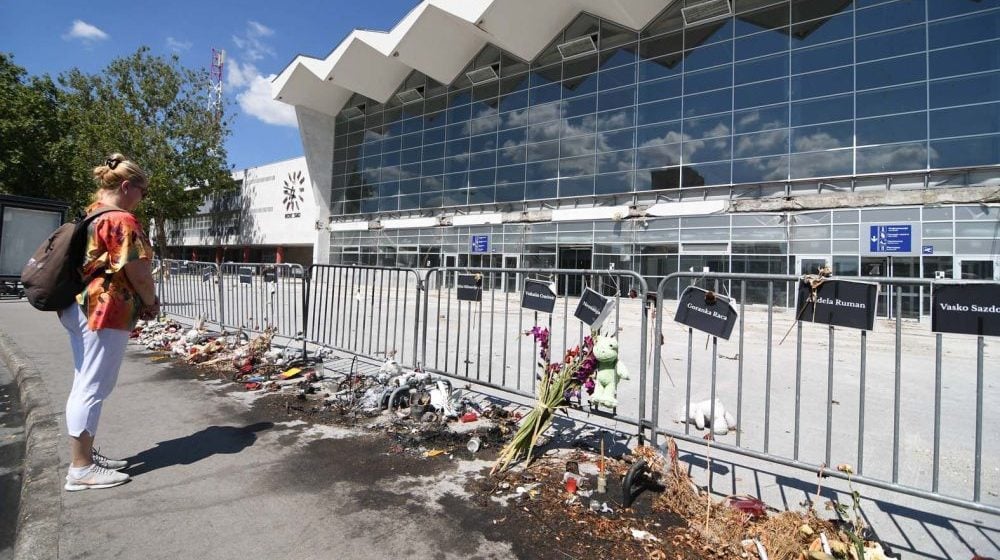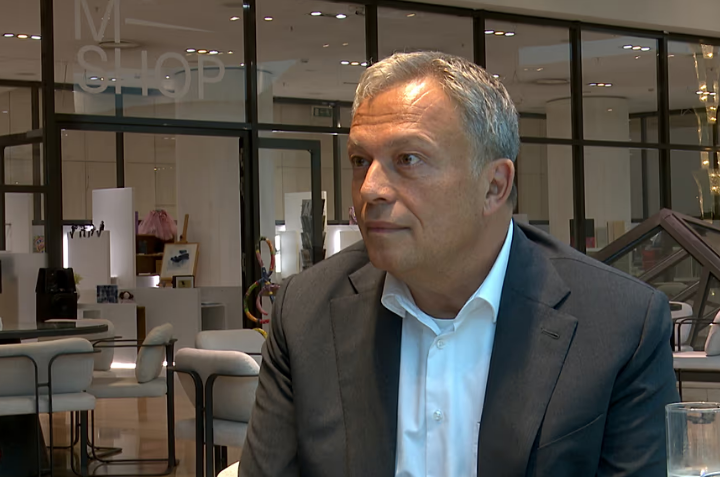
Foto Credit: Beta
The government in Serbia doesn’t cease with the recently coined conspiracy theory that the collapse of the canopy at the Novi Sad railway station was the result of sabotage. For instance, the editor of Informer, Dragan J. Vučićević, showed photographs on his television, which, according to him, depict a device that allegedly caused the tragedy.
Danas’s interlocutors assess that these are unfounded claims used to manipulate the public and interfere with the investigation.
In his presentation, Vučićević also referenced the words of the late Đura Rac, the father of one of the victims of the tragedy in Novi Sad, who claimed that a frequency-inducing device existed on the canopy.
“No frequency-inducing device could have caused the accident”
Đorđe Lađinović, a retired professor at the Faculty of Technical Sciences (FTN), whose construction department carried out the expert analysis on the canopy collapse, tells Danas that no frequency-inducing device could have caused the accident and that it has long been very clear what caused the collapse.
“It is known what the cause of the canopy collapse is, and that is corrosion. I don’t know what Vučićević sees. He is just deceiving the public and trying to create confusion among people,” says Lađinović.
The professor states that the report and analysis by experts from the FTN clearly showed how the canopy fell and that all other versions of the event are “completely irrelevant.”
“The prestressing cables by which the canopy was suspended were prefabricated, so they were inserted into the roof during construction, and a small gap remained near the roof through which moisture entered, and this corroded over time. The corrosion ate away about 40 percent of the cables and thereby reduced their load-bearing capacity,” explains Lađinović.
He emphasizes that due to this corrosion, the collapse of the canopy would have inevitably occurred, and that the addition of glass panels and subsequent overloading only accelerated that process.
“No frequency-emitting device is to blame here; it was cable corrosion, plus the fact that they added more weight to the canopy, but that only accelerated the process. The collapse would have happened sooner or later even if they hadn’t added those glass panels. The collapse would certainly have happened at some point as the corrosion progressed, but it’s hard to say when,” underlines Lađinović.
Allegations Against the Prosecution and Legal Warnings
Dragan J. Vučićević, in his appearance, also made a series of accusations against the prosecution, claiming that prosecutors were aware of the alleged device from the beginning but “consciously hid it from the public.”
He directly named prosecutor Slobodan Josimović, claiming that immediately after the accident, he ordered the removal of the canopy remnants, thus preventing the conduct of a “proper investigation.”
“Violation of journalistic ethics and encroachment on the area of criminal law”
Attorney Vladimir Terzić tells Danas that publicly airing claims of alleged sabotage, without any evidence and outside the scope of the official investigation, can have serious legal consequences.
“Such conduct constitutes a violation of journalistic ethics and encroaches on the area of criminal law. It is also evident that there is an intention to influence witnesses, prosecutors, or the official direction of the investigation,” Terzić believes.
Vučićević claimed that the prosecutors, as he stated, gave “contradictory explanations” regarding the alleged device, at one point mentioning that it was facade lighting, and at another, a device for scaring away pigeons, which he interpreted as an attempt to cover up information.
He also claimed that the prosecution is ignoring a witness identified by the initials “D. Ž.” and is not allowing the inclusion of foreign investigators in the proceedings. Vučićević also suggested that “someone powerful is behind the case.”
Vladimir Terzić says that this case could involve criminal offenses such as Obstruction of Investigation or Prevention of Evidence under Article 336 of the Criminal Code.
“Additionally, if accusations against participants in the proceedings or insinuations about obstruction are publicly presented through the media, this is interpreted as pressure on the judiciary. All of this undermines citizens’ trust in institutions and endangers the integrity of the procedure,” says Terzić.
Organized Attempt to Manipulate the Investigation
Terzić warns that it is particularly dangerous when such unfounded accusations are placed through pro-government tabloids, as this may indicate an organized attempt to manipulate the investigation and preemptively influence the public’s view of its outcome.
“That’s why these statements are not only politically and ethically questionable but may also contain elements of criminal liability, especially if there is a conscious intent to protect individuals connected to the subject of the investigation,” Terzić concludes.
The narrative of alleged sabotage regarding the canopy collapse at the Novi Sad railway station first appeared in public during the summer of 2025. The first to introduce this motive was the President of the Serbian Assembly, Ana Brnabić, claiming it was a “planned diversion.”
The topic soon shifted to the Assembly, where SNS member of parliament Nebojša Bakarec insinuated that a city assembly councilor in Novi Sad, Miša Bačulov, was involved in the demolition of the structure.
Serbian President Aleksandar Vučić later stated that he “personally doesn’t believe” in sabotage, but that he “cannot rule it out,” which further fueled suspicion.
During one of the President’s appearances on Pink television, a video of Miša Bačulov walking under the canopy immediately before the tragedy was also shown.
No evidence has been presented for such claims to date./Danas/

 Hybrid warfare has begun, senior NATO official tells Euronews
Hybrid warfare has begun, senior NATO official tells Euronews  Grotesque Caricature: North Korea Propaganda Exhibition Depicts Deaths Of Ukrainians
Grotesque Caricature: North Korea Propaganda Exhibition Depicts Deaths Of Ukrainians  BBC states that it ‘does not recognize’ as accurate the claims made by Vučić’s advisor Vasiljević about fabricated stories
BBC states that it ‘does not recognize’ as accurate the claims made by Vučić’s advisor Vasiljević about fabricated stories  Dutch government takes control of China-owned chip firm
Dutch government takes control of China-owned chip firm  Russia Sidelined In New Middle East After Trump’s Israel-Gaza Deal
Russia Sidelined In New Middle East After Trump’s Israel-Gaza Deal  Who’s Recruiting Cubans To Fight In Ukraine? A Travel Agent In Provincial Russia For One
Who’s Recruiting Cubans To Fight In Ukraine? A Travel Agent In Provincial Russia For One